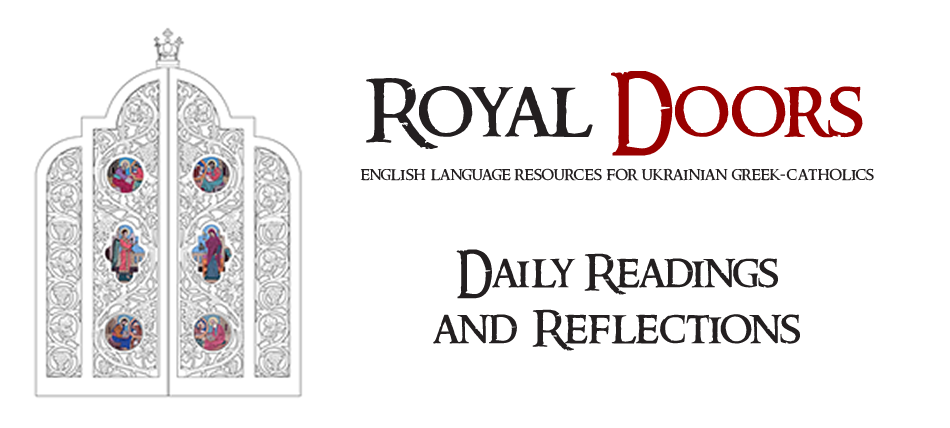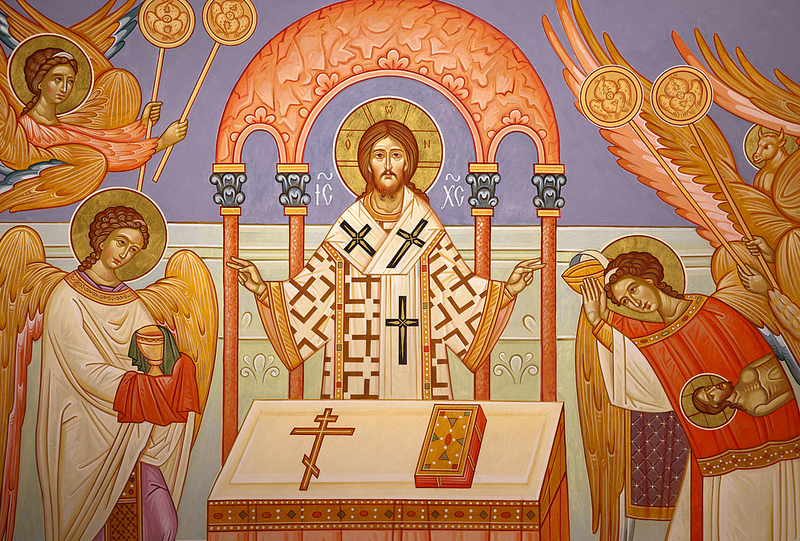THERE ARE ALL KINDS OF PRIESTS in the world. Most Eastern religions (e.g. Hindu, Shinto or Buddhist religions) have priests, generally for the performance of their temple rituals. What is the Christian priesthood and is it different from these examples or from the priesthood of the ancient Greco-Roman and Persian religions?
The Old Testament Priesthood
Chapters 28 to 30 in the Book of Exodus detail the choice, the anointing and vesting and responsibilities of the Israelite priesthood. We find some of this material summarized in the New Testament Epistle to the Hebrews as well. The Israelite priesthood originated during the exodus from Egypt when Moses’ brother, Aaron, and his descendants were designated as priests to offer the sacrifices in the “Tent of Meeting,” the portable sanctuary which accompanied the Israelites in the desert. In the tenth century bc a temple was built in Jerusalem as a permanent sanctuary by King Solomon and Aaron’s successors served as its priests.
Solomon’s temple was destroyed during the Babylonian conquest in 586 bc. Once the Babylonians had been defeated and Jerusalem restored, a second temple was constructed and was dedicated in 515 bc. This was destroyed by the Romans in 70 ad and has never been rebuilt. Jewish Temple sacrifices ceased, although some ultra-Orthodox Jews look to rebuilding the temple in Israel today.
The Old Testament priests were charged with offering sacrifices daily in the sanctuary. These included animal sacrifices and offerings of grain, wine and incense. An animal sacrifice was called in Hebrew a qorban, a term translated into Greek as prosphora in the Septuagint. Both these term are used in connection with the Eucharist in Byzantine Churches today.
Sacrifices were offered in the temple each morning and evening as well as in connection with personal acts of devotion, such as thanksgiving, or reparation for transgressions of the laws found in the Torah. After the destruction of the temple these sacrifices were replaced in Jewish practice by specific prayers and the role of the priests was all but eliminated. Today Jewish priests (generally in families named Cohen or the like) have very restricted roles in the synagogue, such as giving the blessing at the end of the service (“The Lord bless you and keep you…”).
Christ as the Eternal Priest
In the New Testament the Lord Jesus is proclaimed as “high priest of the good things that have come” (Hebrews 9:11). He is the one who replaces the priests prescribed in the Torah, because He fulfills the Torah in Himself. “He is the mediator of a new covenant, so that those who are called may receive the promised eternal inheritance” (v. 15). He replaces the temple itself, as He Himself prophesied: “‘Destroy this temple, and in three days I will raise it up’ The Jews then said, ‘It has taken forty-six years to build this temple, and will you raise it up in three days?’ But He spoke of the temple of His body” (John 2:22, 24).
The work of Christ for our salvation is described in the Epistle to the Hebrews in terms of the priestly sacrifices in the Old Testament. To fully appreciate this comparison we need to understand how such a sacrifice (qorban) was offered. There were three steps: first the victim had to be killed. This was done, usually by the donor, in the temple courtyard. Secondly the victim was offered on the altar by the temple priest. Thirdly, it was assumed, the sacrifice was accepted by God in heaven. The sacrifice was then consumed, first by the priest; then the rest was given to the donor to be shared at his table.
According to this pattern, Christ the victim was killed outside the city of Jerusalem. Then the action moves beyond the earthly plane to the heavenly. As priest as well as victim, Christ offers Himself to God on the heavenly plane. “He entered once for all into the Holy Place, taking not the blood of goats and calves but His own blood, thus securing an eternal redemption” (Hebrews 9:12).
As a result, one single sacrifice offered by Christ was enough to fulfill the precepts of the Torah. “He has no need, like those high priests, to offer sacrifices daily, first for his own sins and then for those of the people; he did this once for all when he offered up himself” (v. 27).
Since Christ’s offering of Himself to the Father occurs in the heavens, it cannot be measured in earthly time. It is happening in eternity, “God’s time.” This is why, in the Divine Liturgy, we can connect with Christ’s eternal gift of Himself to the Father and share in consuming what Christ offered – His own Body and Blood.
The Priesthood of the Church
When we are baptized and chrismated we enter into the Church, the Body of Christ. As such we become members of the royal priesthood of Christ. “Come to him, to that living stone, rejected by men but in God’s sight chosen and precious; and like living stones be yourselves built into a spiritual house, to be a holy priesthood, to offer spiritual sacrifices acceptable to God through Jesus Christ” (1 Peter 2:4-5). Our role as members of this holy priesthood is to offer sacrifice, but what just what “spiritual sacrifices” are we to offer?
First of all, as members of the Body of Christ, we offer in our earthly dimension the sacrifice of Christ which He eternally offers to the Father in the heavens. Thus, at the highpoint of the Divine Liturgy, the presiding priest proclaims in our name, “We anoffer You [the Father] Your own of what is Your own [Your Son], in all and for the sake of all.”
Secondly, our “spiritual sacrifices” include the sacrifice of praise which is the prayer of the Church, the services of praise which the Body of Christ offers daily (vespers, orthros, etc.). Even when we pray these services privately in our own homes we do so in union with the entire Church at prayer: with the Head (Christ) as well as with the entire Body.
A third way in which we exercise our priesthood in Christ is described in St Paul’s Epistle to the Romans: “I appeal to you therefore, brethren, by the mercies of God, to present your bodies as a living sacrifice, holy and acceptable to God, which is your spiritual worship” (Romans 12:1). St Paul explains this in the next verse, “Do not be conformed to this age but be transformed by the renewal of your mind, that you may prove what is the will of God, what is good and acceptable and perfect” (v. 2). “This age” summons us to one form of self-indulgence after another – greed, lust, gluttony, and the ultimate expression of pride, the belief that we can remake ourselves by redefining our gender, and re-purpose God’s plan for man and woman. By resisting “this age” we sacrifice the pleasures such self-indulgence may bring in order to demonstrate that God’s plan for us leads to the Kingdom of God rather than to the therapist’s couch or the recovery group.
We no longer express our dependence of God by the ritual sacrifices of the Torah, but by the living sacrifice of a holy life, lived in temperance, sobriety and chastity.
Source: Eparchy of Newton

